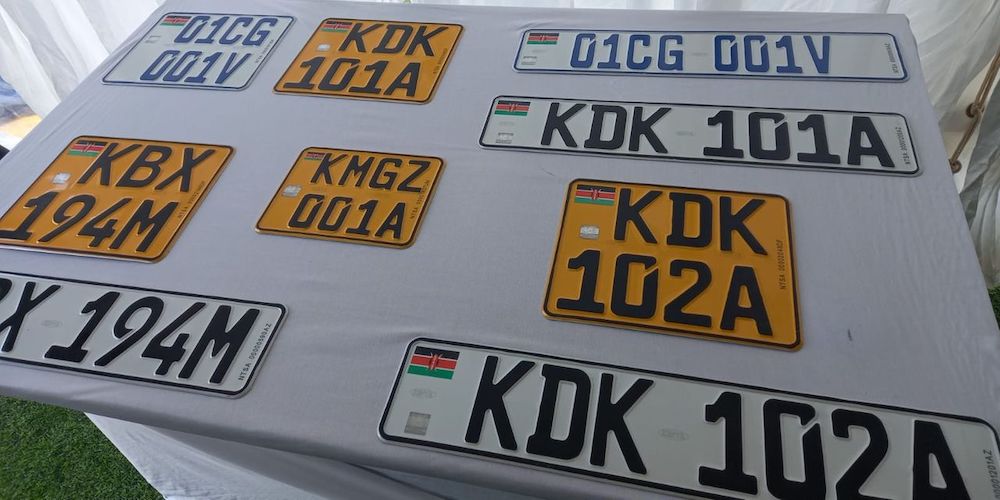
It’s been seven years since Kenya rolled out its smart driving licences — sleek cards embedded with chips that were supposed to replace the old paper ones. But today, more than half a million of those smart cards are still sitting unprinted, untouched, and very likely, already on their way to becoming useless.
A new audit shows the smart DL backlog at NTSA now stands at over 572,000 cards. That’s Sh176 million worth of taxpayer-funded tech gathering dust. And with every month that passes, the window for using them keeps shrinking.
What Happened to the Rollout?
In 2017, the National Transport and Safety Authority (NTSA) signed a Sh2 billion contract with the National Bank of Kenya to supply five million second-generation driving licences. These smart cards came with embedded chips — just like bank cards or national IDs — and were meant to modernize the driving experience, from law enforcement to renewals.
But that plan has stalled. As of June 2024, only 1.63 million cards had been printed. Meanwhile, NBK had delivered more than 4 million. Many of those cards have been returned. The rest? Still sitting there, waiting to be used.
The numbers tell a frustrating story: after nearly a decade, NTSA hasn’t even reached 35% of its target. That’s a slow burn of public money, with very little to show for it.
A Race Against Expiry
The thing about smart cards is — they don’t last forever. Like your bank card, they come with an expiry date. Kenya’s smart DLs are valid for three years after printing, but the blank cards themselves also have a shelf life. After five to ten years, even unprinted, they can degrade. That means the longer they stay locked in storage, the more likely they’ll be tossed out and replaced — at an even higher cost.
And the real kicker? In the 12 months leading to June 2024, NTSA only managed to print about 158,000 cards. That’s barely moving the needle, especially with nearly five million drivers registered nationwide.
The Auditor-General Isn’t Impressed
Auditor-General Nancy Gathungu’s report doesn’t mince words. She points out that the rollout has been painfully slow, and NTSA hasn’t shown much effort to turn things around.
“The uptake for the cards is still slow and the management did not demonstrate efforts to improve the situation,” her report reads. “In the circumstances, the value for money could not be confirmed.”
Translation? The government paid for the tech, the tech was delivered, and now it’s just… sitting there. No one’s using it. No one’s explaining why.
The smart DL backlog at NTSA isn’t just a paperwork issue. It’s a sign that something bigger is off in how the country rolls out digital systems — ambitious on paper, but lost somewhere in execution.
Drivers Caught in the Middle
If you’re a Kenyan driver, you might be wondering whether your licence is still valid — or if you’re even supposed to upgrade. That confusion is part of the problem.
The process to switch over hasn’t been consistent. Appointments are hard to get, centres are often packed, and some drivers say they never received any clear instructions in the first place. Meanwhile, NTSA has flip-flopped between strict enforcement deadlines and silence.
The end result? More than 60% of drivers in the country are likely still using outdated licences. Some could get fined. Others might slip through unnoticed. But either way, it’s not the kind of smooth transition you’d expect from a multi-billion shilling digital upgrade.
And the backlog doesn’t just delay convenience — it creates a legal and logistical grey area that leaves everyone guessing.
So What Now?
At this point, the smart DL project is at a crossroads. NTSA can’t just keep printing at this pace and hope the problem solves itself. The unprinted cards will expire. Replacing them will cost more money. And drivers are losing faith in a system that promised to make things better.
For a country pushing to digitize everything from IDs to land records, the smart DL backlog at NTSA is a reality check. It shows that tech alone doesn’t fix broken systems. It has to be supported by clear planning, public communication, and — most importantly — follow-through.
Until then, thousands of cards will keep sitting in a warehouse, never touched. And millions of Kenyans will keep driving, wondering when — or if — their turn will ever come.
Follow us on WhatsApp, Telegram, Twitter, and Facebook, or subscribe to our weekly newsletter to ensure you don’t miss out on any future updates. Send tips to editorial@techtrendsmedia.co.ke


